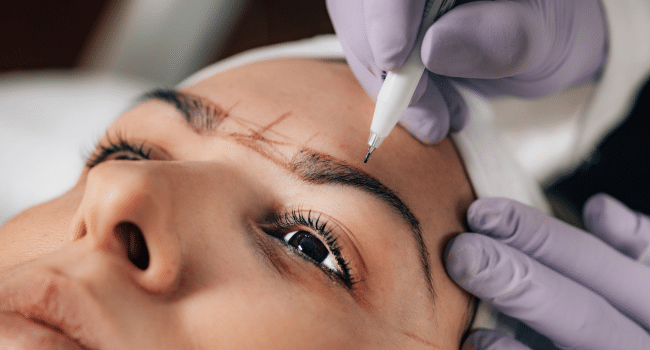Table of Contents
Every skin has its own pros and cons when it comes to microblading. But when it comes to oily skin, it becomes ten times more challenging. When talking about microblading for oily skin, it is essential to understand how it works. Though the process is similar on every skin type, there are still several challenges associated with performing microblading for oily skin. Thus, the results of having thick and defined eyebrows might vary.
Remember, oily skin can affect pigment absorption and its longevity. There are many other reasons for faster fading and blurring of the strokes due to excess oil production. Hang on to this blog as it sheds light on the impact of oily skin on microblading.
What is the Actual Meaning of Oily Skin?
Oily skin is the result of excess sebum in the skin (an oily substance that lubricates skin), which is produced by sebaceous glands. It is essential to keep the skin hydrated, however, too much of this substance can lead to an oily, shiny complexion. There are many issues caused by oily skin, such as clogged or enlarged pores, acne, and more. But you might be thinking of how these aspects can affect the quality of microblading.
Challenge of Microblading on Oily Skin
There are several challenges while performing microblading for oily skin. Not only for the customer, it also creates issues for the professional, affecting the eyebrow microblading before & after results. The several reasons for oily skin to impact the pigment deposited into the superficial layers of the skin are discussed below.
1. Pigment Retention and Blurry Results
Due to excess oil in the skin, it tends to push out pigment more quickly in comparison to other skin types. Instead of looking like an individual’s natural hairs, the strokes tend to blend together, making brows appear powdery or smudged. Thus, excess oil prevents pigment from setting into the skin properly.
3. Faster Fading
Natural oil is the reason for pigment to fade faster than expected. Thus, the initial healing period typically takes about 7–14 days. However, for people with oily skin, it might take more than 20 days. Because of oily skin, microblading results in longer healing and faster fading.
3. Increased Risk of Infection and Scarring
Oily skin means acne-prone skin, which increases the chances for infection after the microblading procedure. The healing process can also take longer and might be complicated, as excess oil might hinder the skin’s ability to heal faster. Thus, people with oily skin face issues like scarring, spots, etc., which might affect the overall appearance of microblading.
Precautions
With a problem comes the solution. Consider these precautions to get successful microblading on your oily skin.
- Choose a skilled and experienced technician for effective results.
- Powder or ombre brows can be a great option for people with oily skin as it creates a soft, shaded look.
- Get indulged in a proper aftercare routine.
- Consider regular touch-ups.
End Note
Oily skin can be a challenging skin type for permanent eyebrow (micropigmentation) makeup. But with proper care and consideration, it will be easier to increase the longevity of microblading. Also, be sure of choosing an experienced technician along with alternative techniques like ombre or powder brows for better results. Therefore, the right precautions can provide you with long-lasting success.
